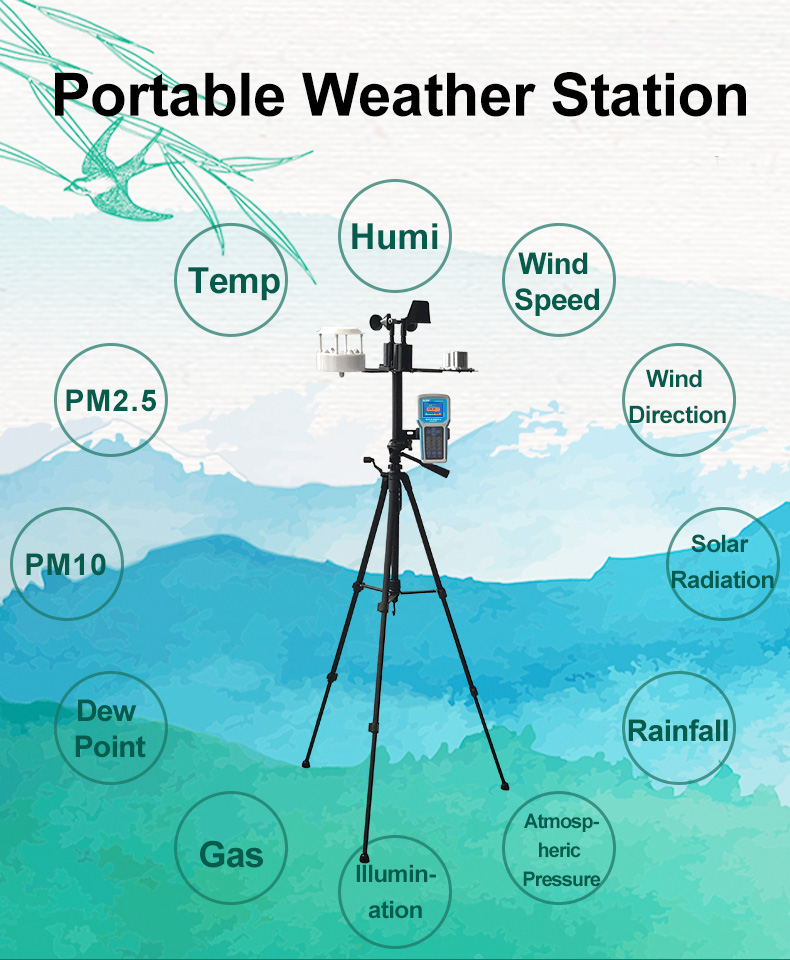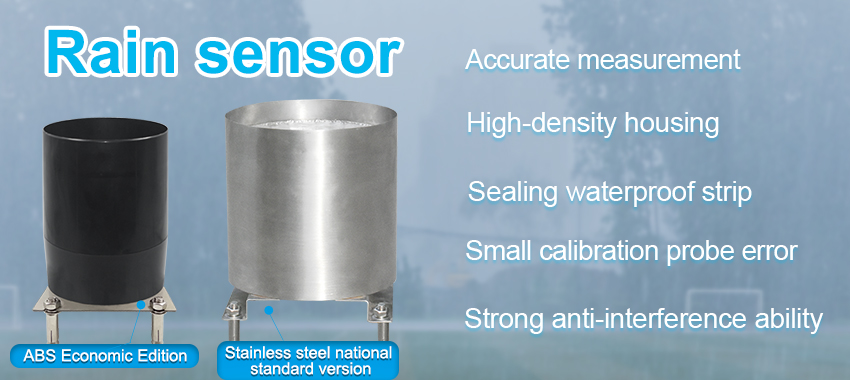A well-equipped weather station for schools allows people to plan their actions and limit damage. Now, let’s look at the role of sensors used in a weather station.

The sensors used in Weather Stations are thermometers, barometers, hygrometers, anemometers, pyranometers, rain gauges, wind vanes, and windsocks. Larger cutting edge stations may also use precipitation identification sensors, disdrometers, transmissometers, ceilometers, etc.
Working of Weather Station Sensors
The instruments are usually present inside a protective box, except a few which require direct contact and exposure to atmospheric elements. All of these sensors transmit the recorded data to computer or display units. Lets see the working of each sensor in detail.

Thermometer
Sensors used in weather stations include thermometers, barometers, hygrometers, anemometers, wind pressure gauges and rain gauges. More advanced weather stations can also use precipitation recognition sensors, dispersion meters, transmisseters, ceiling meters, etc.
Except for a few that require direct contact with and exposure to atmospheric elements, these instruments are usually housed in a protective case. All of these sensors transmit recorded data to a computer or display unit. Let’s take a closer look at how each sensor works.
When the thermometer’s tip comes in contact with the material it is supposed to test, the heat energy is conducted throughout the device, and the reading is displayed on the scale. Using this basic principle, both internal and external temperatures can be measured.
Ergo, Weather Station Sensors come equipped with thermometers that can measure temperature both inside and outside. The sensor present outside is covered with a radiation shield for protection.
Temperature sensors present in the thermometer send the collected data to a console. These sensors are of three kinds- A thermocouple consisting of two wires made of different materials fused at one end. A thermistor (resistant) made up of a cylinder tube containing metallic oxides and PTD probes made of platinum to record even a small degree rise in temperature.
Hygrometer
It is a device used to record the humidity of the air. There are two types :
Analog Hygrometer
It is made up of moisture attracting material(atmospheric moisture causes humidity) and consists of two bulbs like thermometers out of which one is covered with a wet towel to measure the temperature difference between the two bulbs once the water in the towel has evaporated. These can record both indoor and outdoor humidity as well.
Digital Hygrometer
It is placed near the temperature sensor in a weather station unit. It is a type of capacitor with a dielectric polymer layer and a thin metal electrode inside. The hygrometer can absorb water molecules from the air. This moisture absorbance causes a change in capacitance, which can be measured to find out humidity levels.
Wind speed and direction sensor

Wind speed and direction is measured with the help of an anemometer. For wind speeds to be comparable from one point to another, various factors are considered. The standard height is usually 10 meters high in open terrain.
Cup anemometer
It consists of the cup-like structures used to measure wind speed along with a vane to measure direction (vane always points against the course of wind.
Barometer
The barometer is a special instrument by which we measure the air pressure. Change in pressure causes an array of changes in weather. If the pressure measuring device records and measures pressure at varying altitude levels, it is called an altimeter.
Rain Gauges

These are meteorological instruments that can collect and measure rainfall (and snowfall) levels. Rain Gauges find the utmost importance in various industries like food and agriculture, as they can help predict rainfall trends.
Standard Rain Gauges
It consist of a funnel with a collecting unit at the bottom. The collected rainwater is magnified ten times, and the data is sent for further calculations.
Autographic Rain Gauges
It have a recording chart mounted on a drum which rotates every day. They can tip themselves after collected water reaches a certain level. An electric mark is made, and collected water is tipped out of the gauge. It is connected to a data console for transmission.
Pyranometers
These are devices used to measure the solar radiation flux density of the hemisphere of a flat surface. They can normally operate without power or minimum power requirements.


Conclusion
This is the working of some of the basic sensors used in weather station systems. All the data recorded through these sensors are transmitted to the computer unit or data console and processed by experts to forecast the weather.